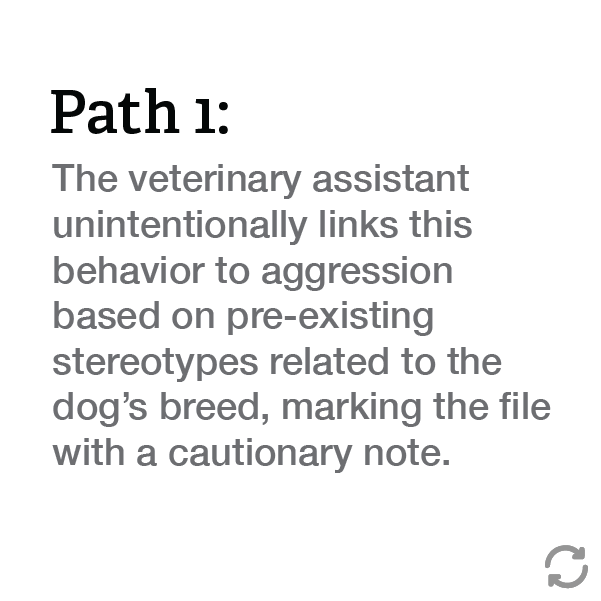Combating implicit bias
A young woman brings her new puppy in because its having diarrhea and she’s worried. During the intake, you request her address and she sheepishly gives you an address quietly. The zip code she gives is known as being the poorest neighborhood.
Hover over the image below:

Likely Result:
The veterinary staff limits options or information to the client, potentially hindering the animal’s well-being. And wasting a trust building opportunity.

Likely Result:
The veterinary staff offers a comprehensive range of options and information to the client, ensuring they are aware of all potential treatment and care options. This leads to open communication, trust, and partnership. Now she is able to keep her pet’s health a priority.
Tank, a big bully dog at his first visit with your team, is cowering under the bench at his exam appointment.
Hover over the image below:

Likely Result:
The veterinarian, influenced by the cautionary label, restricts interaction and fails to conduct a thorough physical exam. The caution label persists in the patient record, leading to subsequent staff members using unnecessary force when handling the patient.

Likely Result:
The team goes in prepared to establish trust and gently introduce to Tank, who quickly enjoys their gifts. The veterinarian conducts a thorough physical exam with care, addressing the specific needs of the patient without breed-related biases. This results in a positive experience for the patient and client promoting trust and well-being in future visits.

